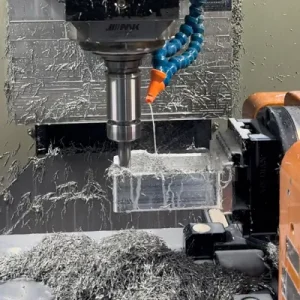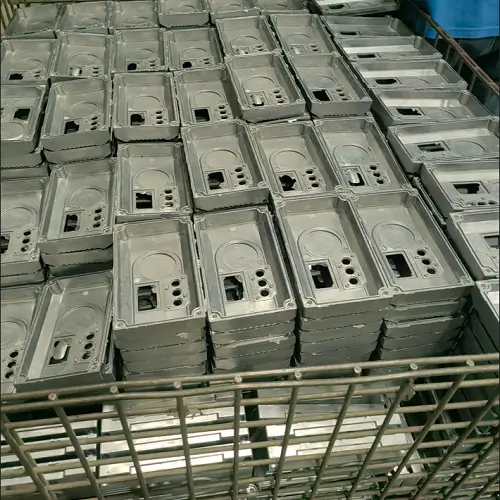CNC prototype machining is a key method for producing high-precision prototypes during product development. By balancing dimensional accuracy and fast lead times, CNC machining serves aerospace, automotive, and medical sectors where prototyping speed and tolerances directly impact product success.

CNC Prototype Machining Applications by Industry
Across various industries, CNC prototype machining covers nearly all high-precision processing needs. If you need a fully functional and highly precise prototype, CNC prototype machining is the most reliable choice, as other prototyping methods generally cannot meet such precision.
Aerospace Industry
CNC prototype machining is an irreplaceable core technology in aerospace. This industry demands near-rigid requirements for structural strength, lightweight design, and extreme environment reliability. Even slight deviations may cause aircraft crashes and increase manual inspection costs, such as for engine blades, fuselage load-bearing brackets, avionics housings, and other critical components. CNC machining can directly cut aerospace-grade materials like titanium alloys and high-strength aluminum alloys, producing functional prototypes that meet real operating conditions. Precision is absolutely prioritized here — aerodynamic surface tolerances of turbine blades often need to be controlled within ±0.01mm, where any deviation may cause aerodynamic failure. Although machining may take a long time (complex single parts may require tens of hours), speed must yield to precision to avoid catastrophic risks during wind tunnel tests or flight trials.
Automotive Industry
In the automotive sector, top brands show a polarized demand for CNC prototypes: R&D focuses on high-precision functional verification (such as cylinder bore cavities, transmission gears), strictly simulating metal fatigue characteristics with typical tolerances around ±0.03mm; manufacturing focuses on rapid response, such as CNC machining aluminum alloy body panel mold masters, sacrificing accuracy to ±0.1mm but compressing mold lead times from months to weeks. Companies often adopt a “stepped precision strategy” — early versions focus on structural validation (speed first), while final versions achieve micron-level finish on sealing surfaces (precision first).
Medical Device Industry
Medical devices are increasingly precise and rapidly updated. Many products relate to patients’ lives, fully utilizing CNC’s precision advantages. Implantable devices (artificial joints, spinal fixators) require perfect matching to human bone shapes, with contour errors often below 0.05mm and surface roughness reaching Ra 0.4μm to avoid tissue abrasion. Surgical instrument prototypes face more complex challenges: endoscope forceps must meet miniaturization (<1mm feature size), high rigidity (stainless steel/titanium), and sterile surface treatments. Although CNC is slower than 3D printing, it can directly machine biocompatible materials with sterile textures. The speed and cost of CNC machining are far greater than 3D printing. The emergence of artificial hearts makes CNC prototype design and manufacturing even more indispensable in the medical industry.
Military Industrial Equipment
Modern nations strive to develop military industry, especially those still in war zones heavily relying on war machinery and ammunition. Many components are complex and require precise parts for operation and firing. CNC prototype machining is indispensable here, including aerospace, military vehicles, communications, and ammunition components.
Benefits of CNC Prototype Machining
High precision and repeatability: Achieves ±0.01mm or higher accuracy; once designed, parts can be reproduced directly.
Fast machining and short lead times: No molds required, fast sampling, typically 1-3 days for complex parts, suitable for small batches.
Wide material variety: Includes various metals (aluminum, steel, titanium alloys), engineering plastics (ABS, PC, PEEK), and composites.
Rapid modifications: Design changes only require program adjustments, no new molds needed, allowing flexible and fast design iterations.
Limitations of CNC Prototype Machining
CNC machining costs are generally higher than processes like 3D printing due to equipment investment, tool wear, professional programming, and labor. This is especially obvious in small batch or single-piece production, whereas 3D printing uses simpler plastic materials.
This explains why many engineers choose 3D printing at early stages, while CNC machining requires more development time for programming and processing. Early-stage companies may prefer other prototyping methods accordingly.
CNC prototype machining is also less environmentally friendly. As a subtractive manufacturing process, it removes most of the material from blocks into chips, producing significant waste that is difficult to reuse except by recycling.
| Feature | CNC Prototype Machining | 3D Printing |
|---|---|---|
| Precision | ±0.01 mm | ±0.1 mm (typical) |
| Materials | Metals, Plastics | Plastics, some resins |
| Surface Finish | Excellent (Ra 0.4μm) | Moderate |
| Lead Time | 1–3 days | 1 day |
| Cost (Low Volume) | Higher | Lower |
CNC Machining vs. 3D Printing for Prototyping
If you have a high demand for high-precision parts, you can check out our professional CNC machining services, combined with rapid prototyping to help your products go to market quickly. For the aerospace and medical industries, we provide titanium alloy material processing solutions that meet strict standards.
If your team is exploring high-precision prototypes using CNC or 3D printing, JeekRapid’s engineers are available for design review and one-on-one manufacturability evaluation.
FAQs about CNC Prototype Machining
Is CNC prototype machining the best choice for prototyping?
Due to its high precision, material variety, and excellent structural strength, CNC prototype machining is widely regarded as one of the best methods for functional prototype production, especially for metal or high-strength plastic prototypes. However, for extremely complex geometries or low-cost small batches, 3D printing or vacuum casting may be more advantageous. Therefore, the best choice depends on specific application scenarios.
Which prototyping method is cheaper?
For fewer prototypes, 3D printing is usually cheaper. Solid metal prototypes require CNC machining. Injection molding has low unit cost but expensive molds, so it’s not recommended for small batches unless the volume is large.


